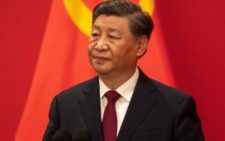China’s BRI 2.0 shifts to digital, green energy support

Since its launch over a decade ago, the Belt and Road Initiative (BRI) has become one of the most ambitious development strategies in modern history.
Initially centred on physical infrastructure – railways, ports, highways, and energy pipelines – BRI has now entered a new phase.
The focus is no longer only on connecting continents with bricks and mortar, but on creating a foundation for future-oriented, innovation-driven growth.
This transformation marks the evolution of BRI into a global platform for digital infrastructure, smart cities, and clean energy – reshaping how nations pursue development in the 21st century.
This new approach reflects a broader shift in development philosophy: moving from quantity to quality, from physical presence to digital connectivity, and from traditional models of growth to sustainable and inclusive progress.
For developing countries, particularly in Africa, this shift presents a unique opportunity to accelerate modernisation and leapfrog into the digital and green economy.
China’s strategic emphasis on digital infrastructure is a major pillar of this next-generation BRI.
Through initiatives that include fibre-optic networks, cloud computing, data centres, and next-generation telecommunications, the Digital Silk Road is enabling partner countries to build the backbone of their digital economies.
These systems are not just facilitating faster communication but are also supporting e-commerce, digital financial services, and remote education.
For many nations, this is a turning point: access to robust digital infrastructure is no longer a luxury but a necessity for national development and global competitiveness.
Clean energy is another transformative element of this new phase. As global attention turns to climate change and sustainability, China’s BRI has adapted to meet the moment.
By supporting solar, wind, hydro, and other renewable energy projects, the initiative is helping countries transition to low-carbon economies.
These investments not only address pressing environmental concerns but also reduce energy costs and promote energy independence.
In regions where electricity access remains a challenge, renewable projects supported by the BRI are creating long-term solutions for communities and industries alike.
In addition to digital and green energy infrastructure, BRI 2.0 also promotes innovation in urban development.
The rise of smart cities – integrated with digital monitoring, real-time data management, and intelligent urban planning – is transforming how cities in Asia, Africa, and beyond operate.
These cities are more efficient in resource management, more resilient to environmental stress, and better equipped to support growing urban populations.
China’s experience in smart urbanisation provides valuable expertise that can be adapted to different regional contexts, fostering tailored solutions for local needs.
For African nations, this evolution of the BRI brings significant promise.
The writer is a Journalist and Communication Consultant














